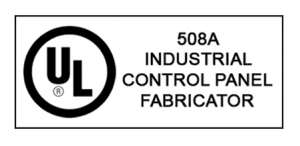Chain Driven Live Roller Conveyors: Reliable Material Transport
Showing the single result
Chain Driven Live Roller Conveyors, often referred to as CDLR Conveyors, are renowned for their reliability and efficiency in material transport. In this exploration, we’ll delve into the world of CDLR Conveyors, understanding their primary function, key features that set them apart, the wide array of benefits they bring to material transport processes, ideal use cases across industries, essential maintenance practices for prolonged lifespan, and the customization options Precision Warehouse Design offers to tailor these conveyors to your unique needs.
Key Features of Chain Driven Live Roller Conveyors
CDLR Conveyors offer several key features that make them stand out:
- Powered Rollers: These conveyors use powered rollers with interlocking sprockets, providing robust material movement.
- Durability: Built to withstand heavy loads and harsh environments, ensuring long-lasting performance.
- Modularity: CDLR Conveyors are modular in design, allowing for easy integration into existing systems.
Benefits and Advantages
The use of Chain Driven Live Roller Conveyors offers numerous advantages in material handling:
- Heavy-Duty Handling: They excel in transporting heavy loads and can endure demanding conditions.
- Customizable: These conveyors can be tailored to fit unique material handling needs.
- Reliability: Known for their dependability, CDLR Conveyors ensure uninterrupted material flow.
- Low Maintenance: Proper maintenance ensures extended operational life.
Ideal Use Cases
CDLR Conveyors find their applications across industries and scenarios:
- Manufacturing: Efficiently transport materials within production facilities, even in rugged environments.
- Warehousing: Facilitate the movement of heavy goods within warehouses, optimizing space and workflow.
- Automotive: Ideal for assembly lines, painting, and finishing processes in the automotive industry.
Maintenance and Durability
Proper maintenance is essential for the durability and longevity of CDLR Conveyors:
- Regular inspections to identify and address wear and tear.
- Lubrication of chains and components for smooth operation.
- Prompt replacement of worn or damaged parts.
Customization Options
Precision Warehouse Design offers various customization options to meet specific requirements:
- Conveyor Length and Width: Tailor the conveyor dimensions to your available space.
- Roller Type: Select rollers suitable for the materials being transported.
- Controls: Adjust conveyor speed and controls for precise material handling.
- Accessories: Enhance functionality with accessories like side guides and safety guards.
Applications Across Industries
Chain Driven Live Roller Conveyors in Manufacturing
In manufacturing facilities, CDLR Conveyors play a pivotal role in moving materials between production processes. Their robustness and reliability contribute to optimized manufacturing operations, especially in harsh environments.
Chain Driven Live Roller Conveyors in Warehousing
Warehouses benefit from CDLR Conveyors as they are designed to handle heavy loads efficiently. These conveyors enable the smooth flow of heavy goods, enhancing the warehousing process and maximizing storage space.
Chain Driven Live Roller Conveyors in Automotive Industry
The automotive industry relies on CDLR Conveyors for various applications, including assembly lines, painting, and finishing processes. Their durability and precision make them indispensable in automotive manufacturing.
Choose Precision Warehouse Design
Chain Driven Live Roller Conveyors offer a reliable and robust solution for material transport in various industries. Their key features, benefits, and customization options make them an essential component of any material handling setup. To explore how Precision Warehouse Design’s CDLR Conveyor solutions can enhance your operations, contact our experts today.
Explore more conveyor system types to optimize your material handling and production processes:



